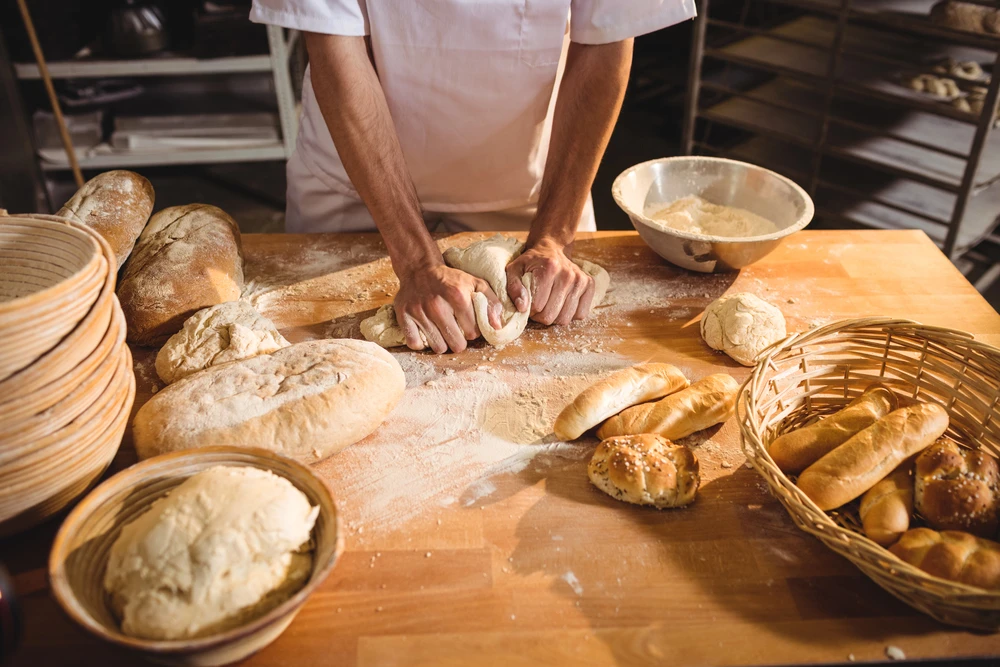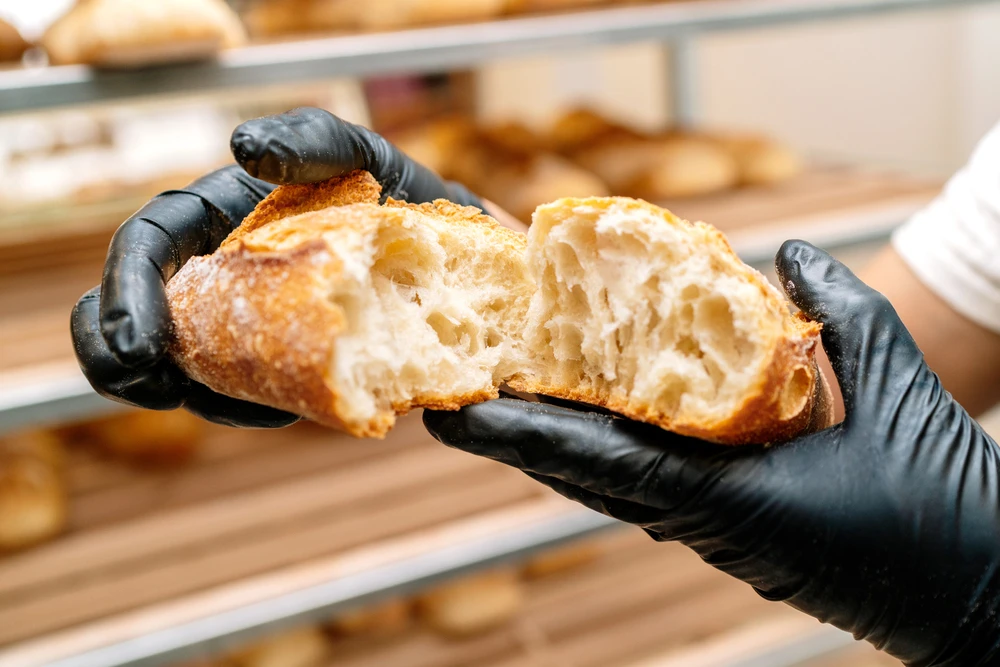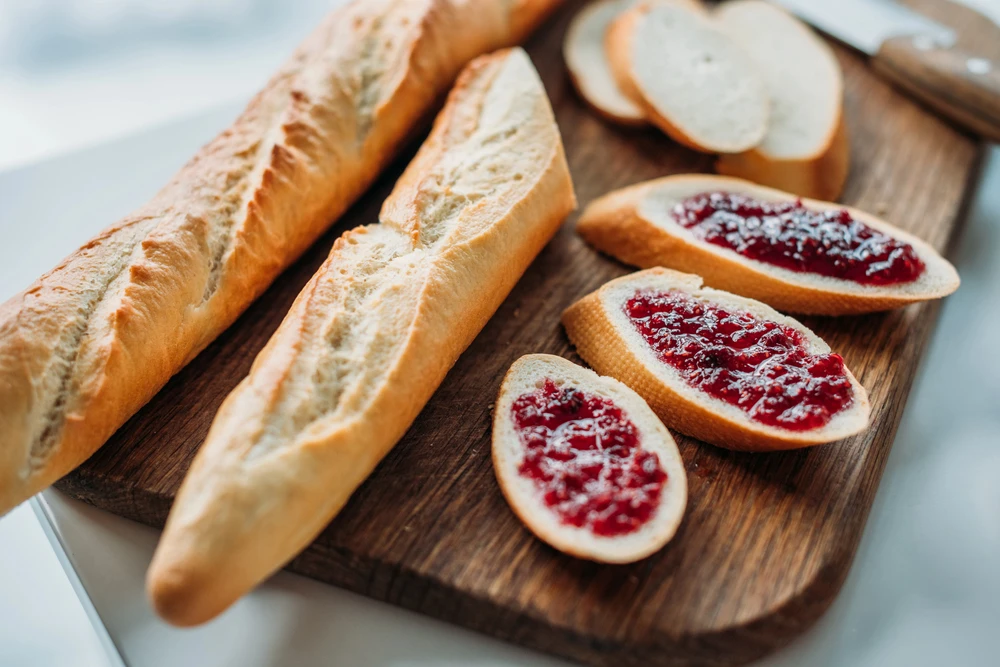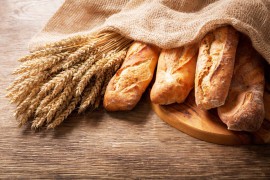Observing the wand: the art of the first glance
A good baguette is first recognized by the eye. Its shape should be elegant but not too perfect: a baguette calibrated like a ruler is often industrial. Its golden color should be uniform, neither too pale (a sign of undercooking) nor too dark (overcooked). As for the grignes, those notches on the top, they should be clean and slightly open: the signature of successful cooking.
The crust: the crunchy music of French bread
In France, we say that a baguette should "sing". A true baguette is distinguished by its thin, crisp crust that cracks slightly when pressed or broken. It should give off a subtle scent of toasted wheat. If the crust is soft or gummy, best pass: the bread has lost its soul.
The crumb: the soul of the baguette
Inside, the mie should be soft and honeycombed: irregularly sized holes are proof of slow, careful fermentation. Its texture should remain soft, never dry or elastic. The ideal color? A slightly golden, creamy white, far from the bright white of industrial baguettes, often enriched with additives. In the mouth, a good crumb reveals flavors of wheat, sometimes hazelnut, that linger in the memory.
A baguette must be aerated / Photo chosen by Monsieur de France: depositphoto
French tradition: the label that makes the difference
To make sure you're not mistaken, look for the "Baguette de tradition française" label. Since the Bread decree of 1993, it guarantees a product made on site, without additives, with only flour, water, yeast or sourdough and salt. It's the choice of connoisseurs. Industrial baguettes, often molded or sold in supermarkets, are blander, with a soft crust and compact crumb.
What do you eat a baguette with in France?
The baguette accompanies everything in French cuisine. In the morning, it's cut to make buttered toast, often topped with jam or dipped in café au lait. At lunchtime, it accompanies the day's dishes: a sliver of baguette to "saucer" the jus of a boeuf bourguignon or gratin dauphinois is a typically French gesture. At dinner, it shares the table with cheeses: camembert, comté, roquefort or brie are generously placed on top. And as an aperitif, it's transformed into small toasts topped with rillettes, tapenade or fromage frais. In short, in France, baguettes are part of every meal and often the center of conviviality.
French tip: follow the queue!
In France, there's no mistaking the line-up in front of a boulangerie. If locals wait, it's because the baguette is famous here. And if you want to blend in with the locals, ask for a "tradition bien cuite": fans appreciate this version with an even crispier crust.
FAQ: How do I choose a baguette in France?
What's the difference between a baguette and a tradition?
The baguette classique may contain improvers or additives, while the baguette de tradition française is made only from flour, water, sourdough or yeast and salt. It's tastier and keeps better.
How much does a baguette cost in France?
On average, count €1 to €1.30 for an artisanal baguette. Traditional is slightly more expensive (€1.20 to €1.50), but the quality justifies the difference.
How can I keep a baguette longer?
Baguette is best the same day. To keep it crisp, avoid plastic and prefer a clean torchon. You can also freeze it and reheat it for a few minutes in the oven.
What's the best time to buy a baguette?
Mornings (before noon) and late afternoons: bakers bring out their new batches, guaranteeing a baguette that's still warm and crisp.








